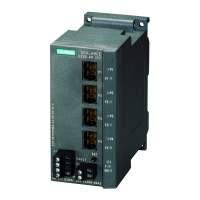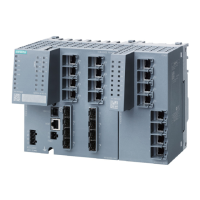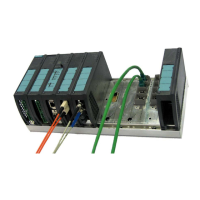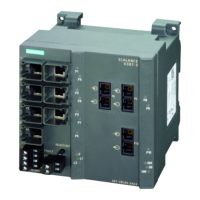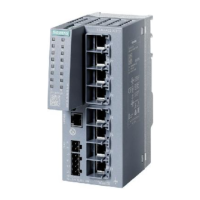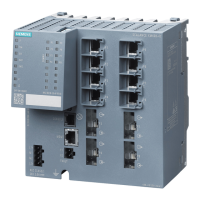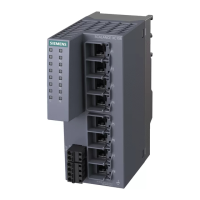Network topologies and media redundancy
1.6 HRP
SCALANCE X-200
24 Configuration Manual, 03/2015, C79000-G8976-C285-06
Note
Name change
The acronym for the media redundancy protocol "High Speed Redundancy Protocol" has
been changed from HSR to HRP.
only a change of name; the functionality has not been modified. HSR and HRP nodes
can be operated together in a ring.
The "HRP" media redundancy method allows a reconfiguration time of 0.3 seconds following
an interruption in the ring.
The following conditions must be met for problem-free operation with HRP:
● HRP is supported in ring topologies with up to 50 devices.
In topologies with SCALANCE X-200 and SCALANCE X-300 IE switches, up to 100
nodes are supported.
Exceeding this number of devices can lead to a loss of data traffic.
● The ring in which you want to use HRP may only consist of devices that support this
function. This applies, for example, to the following devices: X-400 IE switches, X-300
IE switches, X-200 IE switches and OSM/ESM.
● All devices must be interconnected via their ring ports.
Multimode connections up to 3 km and single mode connections up to 26 km between
two IE switches are possible. At greater distances, the specified reconfiguration time may
be longer.
● A device in the ring must be configured as redundancy manager by selecting the "HRP
Manager" setting. You can do this with the button on the front of the device, Web Based
Management, CLI or SNMP.
● On all other devices in the ring, either the "HRP Client" or "Automatic Redundancy
Detection" mode must be activated.
You can do this with Web Based Management, CLI or SNMP.
● In the basic status, the "HRP Client" or "Automatic Redundancy Detection" mode is set as
default.
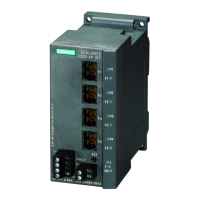
